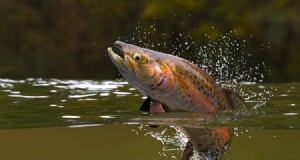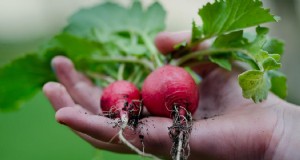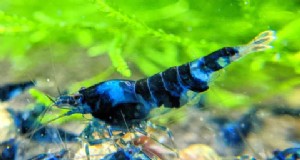淡水エビのタンクは最近非常に人気が高まっています.小型で活発な性格が魅力のエビは、ナノ以下の水槽を中心に人気が高まっています。シュリンプ タンクを成功させるには、いくつかの特別な考慮事項があります。魚より繊細で、最初よりも少し計画が必要なため、最初は親密になる可能性があります。
飼うのが難しいと言っているわけではありません。実際、ほとんどのエビは比較的簡単に飼うことができ、適切な計画が必要です.それがこの記事の目的です–あなたを正しい軌道に乗せるためです.この記事では、正しく始めるために知っておくべきことをすべて説明します。
重要ポイント
- ほとんどのエビ飼育者にとって、スポンジ フィルターは頼りになるものです
- 植えられたタンクのルートに行く場合は、エビを殺す可能性があるため、基質と肥料に銅が含まれていないことを確認する必要があります
- TDS メーターは、原水に問題がないかどうかを判断するのに役立ちます。 TDS が高すぎる場合は、RO または RODI + ミネラル化を検討してください
- 多くの魚がエビを捕食するため、水槽の仲間は注意が必要です。大人のエビを捕食しなければ、赤ちゃんのエビを食べてしまう可能性があります
淡水エビ タンク設備 – 適切な設備の入手
最初のステップは、始めるために正確に何が必要かを理解することです。タンク自体から始めましょう。
淡水エビの水槽サイズ
大きいほど安定性が高くなります。エビは技術的には非常に小さな水槽で生き残ることができますが、水はパラメータと温度の変動を受けやすいです.これはエビの早期死亡につながる可能性があります。エビは、タンク内のパラメーターの変動が多いことを好みません。さらに、健康な淡水エビは活発に繁殖するため、子孫をサポートするためにより大きな水槽が必要になります。
大きすぎるのもデメリットです。エビが小さいのに大きすぎると、水槽が圧倒されてしまいます.このため、20 ~ 29 ガロンが理想的なスイート スポットであり、40 ガロンを超えないようにすることをお勧めします。 2 フィートの長さのタンクは、全体的にセットアップするのに最も安価です。
安い中古タンクを探しているなら 、買い物をするときは、さらに注意を払う必要があります。銅で処理された使用済みタンクは、淡水エビにとって大きな問題になります.銅は、使用済みの水槽にあるように見えるシリコンからリーチし、タンクに新たに追加されたものを殺してしまいます.長期的な成功を確実にするために、銅で処理されたことのない中古のタンクを購入することが重要です。
淡水エビのろ過
エディターズチョイス 光バクト サージスポンジフィルター
最高のスポンジ フィルター
有名ブランドと高品質の評判により、Bacto Surge は他とは一線を画します
Chewyで購入 Amazonで購入
淡水エビのろ過は、エビの稚魚とエビの一般的な小さい性質を考慮する必要があるため、エビの場合はもう少し複雑になります。フィルターはエビの赤ちゃんから大人まで簡単に吸い取ることができます。ただし、これを防ぐためにフィルターを変更するのは簡単です。通常、エビのタンクには次のいずれかが使用されます:
淡水エビのキャニスター フィルターは考慮していません。このアプリケーションではやり過ぎです。 内部フィルター うまくいくかもしれませんが、スポンジフィルターは、内部に行く場合に使用するのに最適な選択肢です.ハング オン バック フィルターを使用する場合は、ハーゲン アクアクリア フィルターを選べば間違いありません。 .
- スポンジ フィルター – 安くて簡単で、箱から出してすぐにエビを食べても危険ではありません。非常に使いやすく、機能するため、多くのエビ飼育者が水槽でこれらを使用しています!
- Hang On Back (HOB) フィルター – パワー フィルターとも呼ばれます。これらは優れた選択肢ですが、事故を防ぐために摂取量を変更する必要があります.損失を防ぐために、吸気口にスポンジ プレフィルターを配置することをお勧めします。
淡水エビの加熱
水族館ヒーター エビ飼育者、特に冷たい水で生きることができるネオカリディナエビを飼っている人々の間で物議を醸す可能性があります.理想的には、淡水エビは華氏70〜79度の水温で飼育する必要がありますが、多くのブリーダーは、冬の間あなたの地域が寒くなりすぎない限り、ネオカルディナエビではヒーターは必ずしも必要ではないと言います.ヒーターについては、エーハイム イェーガーをお勧めします .
淡水エビ基質
アクアリウム基板では、不活性基板または活性基板のいずれかを検討する必要があります。不活性な基質は水のパラメーターに影響を与えませんが、植物を維持するためにはより多くの補給が必要になります.活性基質はカリディナエビのような軟水を必要とするエビにより適しています。また、基質を介して栄養素が利用できるようになるため、根を張った植物を成長させるアクティブな基質でより多くの成功を収めることができます。アクティブな基質を使用する場合は、ADA Aquasoil を検討してください または河川層 、淡水エビ用に設計されています。
ベストバリュー河川層
ベストバリュー
ADA ソイルの安価で初心者に優しい代替品です。エビの水槽にも最適!
ペトコで購入 アマゾンで購入
ネオカリディナ シュリンプのような KH が好きなシュリンプを検討している場合は、不活性基質を検討することをお勧めします。 CaribSea EcoComplete をお勧めします 不活性基板をお探しの場合
活性土壌を使用する場合は、サイクル時間が長くなることに注意してください。新生エビや淡水エビがアンモニア スパイクに非常に敏感な場合、活発な土壌は大量のアンモニアを生成します。 .サイクルを我慢して、パラメーターが安定したらエビを導入してください。
淡水エビの植物
アヌビアス
アヌビアスは丈夫で、より多くの魚や反転が気にならない.初心者に最適!
クリックしてAmazonでベストプライスを購入
エビは植えられたタンクで繁栄します 淡水エビにはいくつかの良い選択肢があります。ここにあなたのエビの住民とうまくいくいくつかがあります:
- アヌビアス (水柱フィーダー)
- ジャバ コケ (水柱フィーダー)
- シダ (水柱フィーダー)
- モスボール (水柱フィーダー)
- キプト (根付いた)
- ロタラス (根付いた)
- クリスマス モス
- ウキクサとウォーター レタス (フローター )
アクティブな素材を使用する場合は、モンテカルロのようなカーペット植物を検討できます .ウキクサとロタラスは、栄養素が高いと成長が爆発する傾向があるため、エビを高硝酸塩スパイクから保護するのに非常に優れています.また、水槽内に腐敗物質が蓄積するのを防ぐために、剪定と葉の掃除を常に行ってください。
淡水エビの照明
淡水エビと照明はとてもシンプルです。適切な Planted Tank LED を使用できます システムであり、リストされている主要な植物を収容できるはずです。最高の機能を得るには、Serene RGB Pro LED をお勧めします 予算内であれば軽くしてください。
ベストバリュー Serene RGB Pro LED
クーポン コードを使用 チェックアウト時に ASD15!
現在の米国のアクアスケーピングへの提供は信じられないほどの価値があります。スペクトル、拡散、プログラムが簡単、優れた PAR 出力。
クリックしてAmazonでベストプライスを購入
淡水エビ検査キット
エビを飼育する際に注意したいパラメータがいくつかあります。これらは次のようになります:
- アンモニア
- 亜硝酸塩
- 硝酸塩
- pH
- GH
- KH
- TDS
アンモニア、亜硝酸塩は、タンクを使い始めるときに測定することが非常に重要です。タンクが成熟するにつれて、主に硝酸塩レベルが心配になります. pH、GH、および KH は、目的のエビで安定していることを確認するために定期的にテストする必要があります.
TDS は、エビの飼育に関してテストする新しいパラメーターです。 TDS は、水中の全溶解固形物の尺度です。 TDSが多すぎるとエビの健康に影響を与える可能性があり、一部のエビは非常に敏感であるため、RODIシステムの水を使用するのがより理想的です シュリンプ ミネラルなどのサプリメントで水を再物質化します。 .以下は、特定のエビの種類の TDS レベルの範囲を示した表です。 :
| 名前 | 最適 TDS | 制限 |
| 竹エビ | 150 – 200 | 100 – 300 |
| スノーボールシュリンプ | 150 – 200 | 80 – 300 |
| ゴーストシュリンプ | 150 – 200 | 100 – 400 |
| 天野海老 | 150 – 200 | 100 – 400 |
| チェリーシュリンプ | 150 – 200 | 100 – 400 |
| カーディナルシュリンプ | 100 | 50 – 150 |
| ブルータイガーシュリンプ | 180 – 220 | 100 – 300 |
My Pick HM デジタル TDS メーター
オンラインですぐに入手できるこの TDS メーターは、レベルがエビに最適であることを確認するのに最適です
アマゾンで購入
TDS メーター オンラインで簡単に入手でき、正確な測定値を取得するのに優れています。 TDS をテストするときは、他のパラメーターもテストするようにしてください。すべてが TDS に影響するため、TDA を測定するだけでは十分ではありません。 アクアリウム テスト キットに関する投稿をご覧ください テストキットに関するその他の推奨事項については。 KH および HG テストの場合、API テスト キット ほとんどのエビ飼育者に有効です。
Neocaridina のパラメーターは次のとおりです。
- pH:6.5 – 7.5
- KH:1-4
- GH:6-8
- TDS – 80-200
- 水温:65 – 73 F
Caridina エビのパラメーターは次のとおりです。
- pH:6.2 – 6.6
- KH:2-6
- GH:4-8
- TDS:80-100
- 水温:70 ~ 73 F
これらは一般的なガイドラインであることに注意してください。 Caridina とそのハチの品種にはさまざまな理想的なパラメーターがあるため、それに応じて調査を行う必要があります!
淡水エビ タンクのセットアップ方法
Aaron's Aquatics の仲良し Aaron からビデオをお借りします。このビデオでは、セットアップの例と起動プロセスを示します。エビ水槽のアクアスケーピングは石組スタイルを使用するのが最適です 水景 .これは、大きな岩が山を作り、エビが冒険するためにまだ滑らかであるためです。チョラウッドはエビにも最適です。 Aaron の動画には、Catappa Leaves などの他のおすすめもいくつかあります .
水族館用の淡水水族館エビ - 適切なものを選択する
ですから、この投稿の前半で、ネオカリディナとカリディナエビについて話しているのを聞いたことがあります.この投稿では、これら 2 種類のエビに焦点を当てます。
ネオカリディナシュリンプは、カルディナシュリンプよりも硬くなります。それらは硬水種であり、KH のように、不活性な基質に最適であることを意味します。ネオカルディナ シュリンプの場合は、チェリー シュリンプ は最も初心者にやさしく、最も多様性があります。
初心者に優しいチェリーシュリンプ
素晴らしい赤色で、とても丈夫です。チェリーシュリンプは、シュリンプタンクに最適なビギナーシュリンプです
クリックしてベストプライス
チェリー シュリンプには、レッド チェリーが最も低い等級で、ペイント ファイヤー レッドが最も高い等級が付けられています。成績は次のとおりです:
- チェリー
- さくら
- ファイアレッド
- ペイントされたファイヤーレッド
各グレードは、他のグレードよりも希少で高価です。チェリーシュリンプは繁殖し、急速に成長します。
恐るべしブルース!ブルードリームシュリンプ
ネオンのような青色で、これらのエビは水槽に彩りを添えます
クリックしてベストプライス
その他の例には、黄色が含まれます 、青い夢 、緑 .すべてネオカルディナ ダビディ種に由来します。複数の色を入手できますが、時間の経過とともにそれらが交配され、雑種になることに注意してください.一貫した色を維持するには、品種のみのタンクの方が理想的です。
カリディナシュリンプは軟水で、よりデリケートなエビです。それらは他の国から輸入される傾向があり、出荷時にサイズが大きくなり、後で説明するさまざまな理由で死滅しやすくなります.カラディアエビは、いくつかのエキゾチックな色をもたらし、ADA Aquasoil のような活発な土壌によく適応します。なぜなら、彼らはより柔らかい水を好み、プロレベルの植えられたタンクによりよく合う傾向があるからです。カラディナエビは、パラメータの変動に非常に敏感であり、エビが業界で維持するのが難しいとラベル付けされる傾向がある理由.一般的なカラディナ シュリンプの 1 つはアマノ シュリンプです。
スラウェシエビと呼ばれる別の種類のエビがあります。これらは、通常輸入されるエキゾチックなエビです。出荷時の死亡率が高く、高度なケアが必要なエビと見なされています。
以下は、ネオカルディナとカラディナのエビの品種に関する簡単な表です。
| ネオ・カリディナ | カリディナ |
| チェリー | タンジェリー タイガース |
| 雪玉 | ラクーンタイガー |
| ブルーゼリー | イエローキングコング |
| 青い夢 | オーラブルー |
| カーボン | ブルーボルト (クリスタル/ビー) |
| オレンジ | シャドーパンダ(クリスタル/ビー) |
| チョコレート | ゴールデン ビー |
| グリーンジェイド | 白雪姫 |
淡水アクアリウム シュリンプの購入 – ソーシング セレクション
淡水水族館のエビを購入する場合、調達は成功の主要な要素になります.エビには、輸入エビと自家製エビの 2 つのソースがあります。
エビの輸入は、地元の魚屋でよく見かけるものです。私の検疫の投稿を見たことがない場合は、私たちの趣味である輸入家畜の調達サイクルに慣れていない可能性があります.参考までに以下に示します:
一般的に、輸入された家畜は、複数の流通を経てあなたの家に届きます。これはストレスと病気の可能性を高めます。輸入されたエビもサイズが大きくなり、飼育環境に適応するのが難しくなります。輸入されたエビは、出荷時に死んでしまうことがよくあります(フロリダ大学からの写真参照) ).
一方、自家繁殖のエビは一般的に丈夫です。彼らは飼育下で使用され、病気にかかりにくい傾向があります。自家繁殖のエビも、ブリーダーが経験を積んでいない場合、または輸入されてから1世代または2世代しか離れていない場合、同様に問題が発生する可能性があります.一般的に、あなたの地域の地元のブリーダーから自家繁殖されたエビを入手する方が良いでしょう.地元の水族館協会やソーシャル メディア グループで自家繁殖エビの供給源を確認してください。
地元のブリーダーを利用できない人には、Buceplant を強くお勧めします。さまざまなネオカルディナ シュリンプが販売されており、どれもシュリンプ タンクに最適です。
淡水水族館のエビの害虫 – それらに対処する
Freshwater aquarium shrimp have pests that we need to deal with. Most will come from freshwater plants we purchase. The main pests are:
- Planaria
- Hydra
- Scuds
- Dragon Fly Nymphs
Planaria is a type of flatworm that will attack and eat shrimp. You can use a Planaria Trap or a No Planaria medication to eradicate the problem.
Hydra is a small aquatic vertebrae. They will sting and poison your shrimp killing them. They can also be treated with No Planaria medication.
Scuds are especially dangerous for newborn shrimp. It is another hitchhiker from live plants. Manual removal is best for these. The reproduce very fast. Another option is to use Bettas or Killifish as they they will happily eat the scuds. Betta are a wildcard for shrimp tanks. Some people go the nuclear route, remove as many shrimp as they can, drop the Betta in and let it eat all the scuds over time. Once the scuds have been eaten the Betta can be removed and the shrimp can be reintroduced.
Dragonfly Nymphs are nasty predators. They will kill and eat your shrimp and will hunt non-stop. Manual removal is your best bet. There are other options you can do, but they will harm your shrimp.
The best way to deal with pests is prevention though. Consider dipping your plants in a bleach solution (19 parts water to 1 parts bleach) and rising with Prime conditioned water before introducing them into your aquarium or consider quarantining your live plant additions. See the video below from LifeWithPets on how to do a bleach dip for your live plants:
Shrimp Tank Mates – Fish Compatible in Shrimp Tanks
You may not be interested in shrimp only tanks, so this list of fish will help with picking ones that will work with your shrimp. One thing you will need to keep in mind is if you add fish, it is going to be very likely that the shrimp babies will get eaten so don’t expect to breed shrimp with fish. There are very few fish that will not eat a baby shrimp if given a chance. You can increase your chances of success by choosing a larger species of shrimp like an Amano. Here is a limited selection of small fish that may work in a shrimp tank:
- Small Tetras – Neon Tetras would be a good example
- Small bottom-dwelling fish like Corys – Particularly Pygmy Corys
- Harlequin Rasboras
- White Cloud Minnows
- Glassfish
Feeding Your Shrimp
You need a mix of natural and prepared food to be successful with shrimp tanks. The main natural food we are looking to have available is biofilm. Biofilm is the structure bacteria build to support themselves and grow on surfaces. Shrimp will eat this in the aquarium. Biofilm can grow on your sponger filter, leave litter, mosses, and rocks. The more surface you have available the better for your shrimp. You can also provide “permanent food” like Cholla Wood .
The next is prepared food. Powered Shrimp Baby Food by GlasGarten is a great choice to sustain shrimp babies. For adult shrimp, commercial shrimp food is available for purchase and will do the trick.
Shrimp Baby
This powdered food is perfect for baby shrimp
アマゾンで購入
It is also a good idea to use a Feeding Tray when feeding your shrimp. This will prevent excess food getting lost in your substrate and keeping the rest of your aquarium clean from food debris. It’s also a nice way to observe your fish.
Shrimp Tank Maintenance
Shrimp in general are more prone to parameter changes than fish. Staying on top of maintenance is a big deal with shrimp tanks. Many shrimp tanks are also smaller tanks, which make them more susceptible to parameter changes.
Water Quality
Shrimp are sensitive to ammonia, nitrite, and higher levels of nitrate. Weekly water changes are especially important with shrimp tanks. Another factor to consider with shrimp tanks is water top off. When water evaporates, parameters can change. Evaporation just pulls out water, but leaves your trace minerals in. You will want to added pure replacement water. This would be something like RODI water or distilled water to replace your evaporated water. You can use an Auto Top Of System to make things easier.
Shrimp Tank Maintenance Tasks
Additional tasks aside from water changes and top off water would be once a month filter cleaning. Make sure when you clean your filter media that you use your pulled tank water and squeeze the foam or sponges. This will clean out the debris, but will maintain the bacterial colonies in the media. Sponges should last a very long time and shouldn’t need to be replaced. Don’t replace a sponge unless you absolutely have to, and be very careful if you do because of the bacterial colony loss. It’s better to seed a sponge beforehand if you have to replace a sponge.
Another key thing to note about shrimp tank is you need to be very careful when you put your hands in your aquarium. Shrimp are very sensitive to toxins. Detergents, chemicals on plants, flea treatments from pets, flea shampoo, and cleaners are prone a risk for your shrimp. Always make sure you wash your hands before putting your hands in your tank. Reef Safe Soap is your friend and a recommended purchase if you are going to handle a shrimp tank.
Common Shrimp Tank Problems – Why Shrimp Die
There a number of challenges one can come across with a Shrimp Tank. I’ll try to cover several of them in this post.
Parameter Swings
Shrimp are sensitive to water parameter swings. Having proper tests kits and a TDS meter are you friend. Get in the habit of regularly testing your water on a weekly basis.
Uncycled Tanks
Shrimp are very sensitive to ammonia in the aquarium and with their prolific breeding, they can add on to your bioload overtime. If you are using active substrate like ADA Aquasoil, keep in mind that the substrate will generate ammonia when it is first introduced. You will want to give an active soil like this a good two months before introducing shrimp.
Molting Issues
A common aliment in beginner shrimp tanks. This indicates a lack of iodine in the tank. Most staple food and powered food will serve this function. Fertilizer that is made for shrimp tanks will also include iodine to help support the shrimp’s molting process. Additional items to add if needed would be montmorillonite material powder that you can readily purchase online.
Too Many Male Shrimps
If you have a shrimp tank with too many males to females, this will present a problem to your population. Males in abundance will overwhelm, stress out, and harass females to the point of death. If you are seeing your females are dropping fast, consider removing a portion of your male population to balance out your numbers. I have provide examples of a female and male shrimp to show you the visual differences. The male is typically longer while the female has an expanded abdomen section.
Aquarium Heaters
Heater failure is pretty common in our hobby. A failed heater can lead to many shrimp deaths. Heaters will usually fail on the on position, which will overheat your tank. Consider an Aquarium Heater Controller to prevent a catastrophic event.
Pests
As we mentioned earlier, pests are a major problem in shrimp tanks. Consider using a bleach dip to prevent nuisance pests in your tank.
Toxins
Toxins – especially copper are especially deadly to shrimp. Make sure if you are using fertilizer that your fertilizer is shrimp safe meaning that there isn’t copper in the mix or purchase a fertilizer specially designed for shrimp. Check our our Aquarium Plant Fertilizer post for recommended products.
Poor Source Water (Tap Water and Shrimp Tanks)
Let’s talk about your source water. In general for freshwater tanks, you can be okay using tap water that is treated with a Dechlorinator . If you are going to keep harder to keep shrimp like Caridina shrimp, you will probably need to go with better source water.
Shrimp are very sensitive to copper levels and high nurtients, things that could be present in tap water. You will want to look at your city’s water reports to see what is in your water. RODI water is 99% pure H20 for your aquarium and ideal for sensitive species of shrimp. If you use tap water with Caridina shrimp, it’s possible to get quick die off of your shrimp. If you are using RODI water, you will need to remineralize the water when making water changes. You will want to use a remineralizer supplement in order to get the proper elements in your water changes so your shrimp can stay health.
Editor's Choice SaltyShrimp - Shrimp Mineral
編集者の選択
The go to for remineralizing your source water. Highly recommended for all shrimp tank setups
アマゾンで購入
Baby Shrimp Deaths
Having baby shrimp dying in large numbers can indicate an inadequate source of biofilm for the babies. Focus on building this up in your tank with more rocks, mosses, leave litter, and consider using powdered food to keep them fed.
Life Span Of Shrimp
Shrimp don’t actually live very long. Most shrimp will live 6-12 months in an aquarium, but they breed a lot. This is also why having a single variety of shrimp is a big deal because generations pass quickly and within a couple of years you will have hybrid shrimps in your tank from the new generations.
Closing Thoughts About Keeping Freshwater Shrimp Tanks
Freshwater shrimp tanks are loaded with personality and if bigger shrimp are selected, they can be manageable for a beginner. Shrimp tanks are a niche in our hobby with challenge levels for everyone and it can be really exciting to have an actively breeding tank.
They can really be a lot of fun to keep and with their smaller sizes, your wallet will thank you versus going for a much larger tank :).ご不明な点がございましたら、下にコメントを残してください。 Thank you for reading.




